How to Add, Subtract, Multiply and Divide Functions - Answers
The answers are in BOLD below.
NOTE: The transcript from the video is listed below the quiz for your reference.
1.

2.
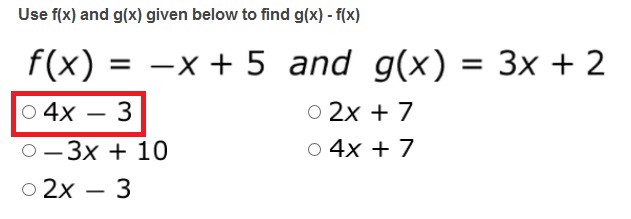
3.

4.
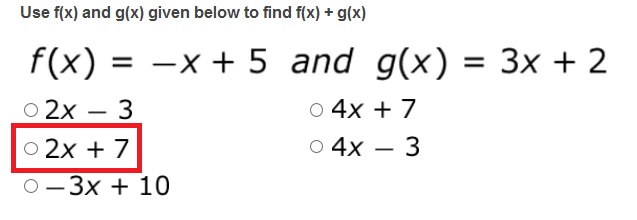
5.
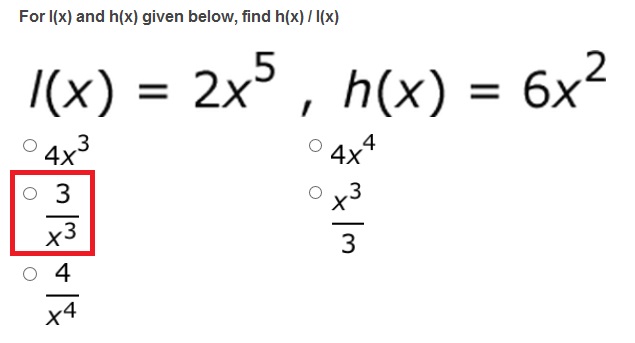
Adding, subtracting, multiplying and dividing functions is about as simple as substituting in expressions and then just doing whichever operation it asks you to do. Check out this video lesson to see some examples of this and learn just how easy it is!
Cost, Revenue & Profit Functions
I'm a pretty big sports fan, but I've always been bummed out by how expensive it is to buy gear from my favorite teams. But when I recently moved to Minneapolis, I made some friends that have decided to do something about it! They just opened their own t-shirt company called Tinyapolis that sells t-shirts for the popular teams here in Minnesota.
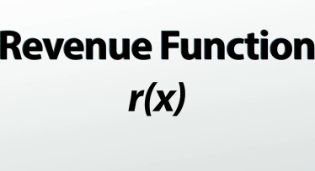 |
But when you own your own business, you want to be sure that you're going to be able to make money. So before they took the plunge and bought all the supplies to begin making their shirts, they figured out what their revenue function, or r(x), would be. This is the function that would tell them how much money they would make from selling x t-shirts. But it's just as important to know what the cost function, or c(x), would be. This would tell them how much money they would have to spend in order to make x t-shirts.
 |
After doing a little research, they came up with the revenue and cost functions seen here: r(x) = 20x and c(x) = x^2 - 1100x + 1200. But separate, these two functions don't tell the whole story. What is most important is, after it is all said and done and the t-shirts have been made and sold, did they make money or lose money?
That's where the profit function, or p(x), comes in. The profit function would tell my friends whether they would make more money from selling the shirts than it would cost them to make them. This means that the profit function is simply the revenue function minus the cost function. If it costs more to make x t-shirts than they make from selling them, they'll have negative profit. But if they make more from the sales than they spend producing the shirts, they'll be in good shape!
So what does this profit function actually look like? Well, all we really have to do is substitute in what we already know the revenue and cost functions are and then simplify. First we'll go ahead and distribute the negative sign to the x^2, the -1100x and the 1200. Then we combine like terms by grouping together the 20x and the 1100x, and we end up with our profit function as this: p(x) = -x^2 + 1120x - 1200. Whoa, if those numbers are correct, they're going to be rolling in it. I hope they spread the wealth!
Function Operations
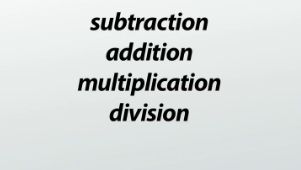 |
This was an example of a function operation - specifically, subtraction. But we can do all the major operations on functions, such as addition, multiplication and division. All of these different operations simply require you to substitute in what you know the function is and go from there, which really isn't too bad, but there are a few reasons that these problems can get tricky.
First, just the function notation itself often confuses people into thinking it's more difficult than it actually is. Secondly, there is a good amount of prerequisite knowledge you need to know in order to fully solve function operation questions. This is because each operation will end up asking you to do something a little different. For example, when we subtracted functions just a few seconds ago, we were required to combine like terms. But when you multiply functions, you'll often have to remember how to multiply polynomials with FOIL or the area method. But that means as long as you're comfortable with function notation and have a solid algebra background, there isn't anything to it.
Multiplying Functions
Let's take a look at a different example that will ask us to use a different operation, maybe multiplication like I just mentioned. If f(x) = x^2 + 2x - 5 and g(x) = 3x - 1, then what is f(x) * g(x)?
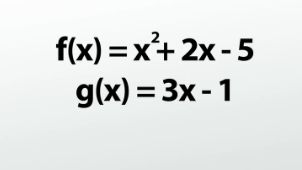 |
Let's avoid the first pitfall and not let all this function notation freak us out. All we're being asked to do is multiply the two functions, so we can substitute in those expressions they listed for us like this. At this point, it's simply a matter of using our algebra skills to simplify the expression. Because we're multiplying polynomials, that means FOIL-type multiplying. Basically, we need to multiply each term from this front expression with each term in the second one.
I like using the area method to organize my work for multiplying polynomials that have more than two terms. That requires us to make a chart that has dimensions equal to the number of terms in our two polynomials - in this case, three by two. Next, we label the top and the side of the chart with our two polynomials. So the top, which is divided into three sections, gets f(x) (x^2, 2x and -5), while the left of the chart gets g(x) (3x and -1). Now we fill in the chart by multiplying the terms to the left and above each box. For example, the first box will be x^2 * 3x = 3x^3. Continuing this process would look like this, and now we just combine whatever like terms we have to find our final answer is 3x^3 + 5x^2 - 17x + 5.
Dividing Functions
Dividing functions is a very similar process. We won't have to multiply with the area method, but we'll still substitute in expressions and simplify whatever we're left with. Let's try this example: given g(x) = 4x^5 and h(x) = 8x^2, what is g(x) / h(x)?
Don't worry about the notation; let's just substitute in what we know g and h are. That leaves us with this: 4x^5 / 8x^2. Now we just need to simplify our expression, this time with our exponent properties.
 |
We can either use the quotient of powers property, which tells us to subtract the exponents, or we can simply write out the xs we've got and cancel out any that are on the top and the bottom. Either way, we should end up with only three xs left in the numerator. Now we can simplify the numbers using middle school simplifying of fractions skills to say that 4/8 is the same as 1/2, and we've got our answer: x^3/2!
Lesson Summary
We can add, subtract, multiply or divide functions by substituting in what we know the function is and then simplifying the expression. These things are called function operations. The key to function operations is to not let the function notation get you off track. Substitute in what you know the functions are, and then use whatever algebra knowledge you have to simplify the expression.